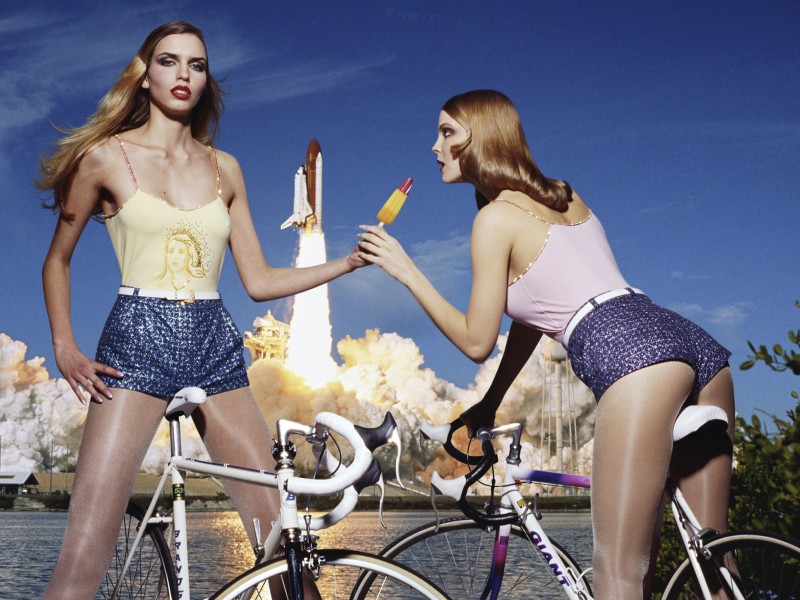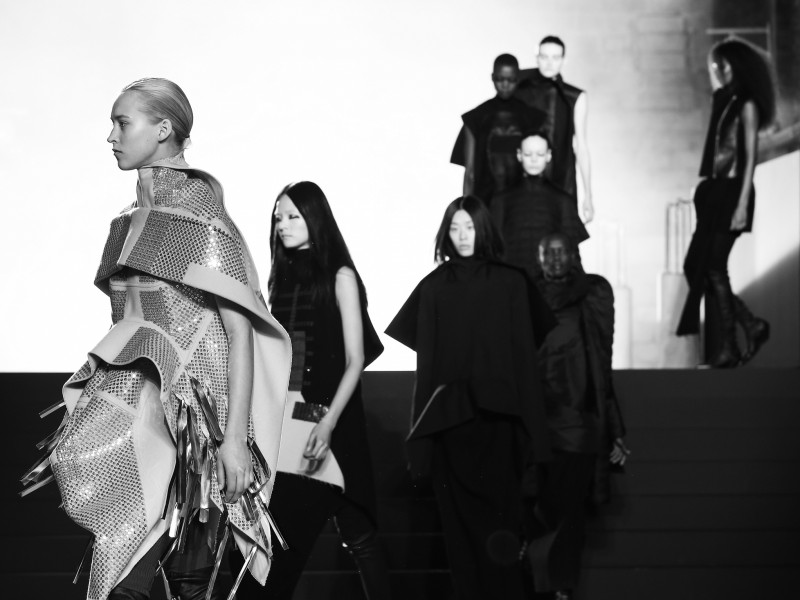Lebanese businessman and collector Tony Salamé stood on an escalator above a crowd of some 2000 lavishly dressed socialites, art world impresarios, politicians and journalists. They joined him for the much anticipated launch of Aïshti, the enormous $100 million mall and art foundation set alongside the picturesque Mediterranean, 20 minutes from Beirut. Around him everything glimmered: the patterned marble floors and polished steel fittings reflected the neon lights of the luxury boutiques arranged around the central atrium. Sequined dresses, embellished bags and patent pumps preciously displayed, reminded everyone that the space was as much about art as it was about commerce. Salamé stood radiant, his glowing skin and grin betraying nothing of the apocalyptic storm that had hit Beirut that same morning.
Despite the non-existent government, tragic Syrian refugee crisis, dysfunctional electricity and water systems, Salamé set out to build a 35,000 square metre mall and art foundation in two years. Salamé championed his ambitious project aided by the contribution of an experienced team of creative thinkers from around the world including: New York art dealer Jeffrey Deitch, artistic director of the New Museum Massimiliano Gioni, architect David Adjaye and Cecilia Alemani of the High Line Art project.
Salamé has overcome many obstacles since coming of age at the dawn of the Lebanese Civil War. As bombs and checkpoints punctuated the daily lives of Beirutis in the 1980s, and despite the looming challenges of shut off airports and phone lines, Salamé began importing European brands to cater for the fashion savvy. Salamé’s persistence resulted in the expansion of his burgeoning chain of boutiques, quickly establishing himself as one of the savviest entrepreneurs and art collectors in the world.
At the Aïshti four day long opening extravaganza, Salamé flaunted his generous hospitality to 400 VIPs from around the world. Bringing together leading figures in the art and fashion worlds, including his close collaborators and art dealers Simon de Pury, Thaddaeus Ropac, Gavin Brown, artists Dan Colen, Daniel Buren and Maurizio Cattelan. The guests dined on a terrace under the atmospherically lit Sursock Museum, enjoyed hip-hop tunes in a jasmine scented garden at Salamé’s Metropolitan Art Society, viewed Richard Prince Instagram prints and finally enjoying the new, albeit unfinished, Aïshti Foundation on the waterfront highway.
They marched into the majestic entrance and gathered in the grand marbled lobby, snapping glasses of champagne from roaming servers. They ascended on escalators towards the Céline, Dolce & Gabbana, Prada and Chloé boutiques. In the adjacent art space, four floors were filled with mostly monumental pieces by prominent contemporary artists including: Sterling Ruby, Urs Fischer, Gerhard Richter and Wolfgang Tillmans. Finally the guests met on the piazza nestled below the brick-red steel façade, enjoying Lebanese snacks while taking in the saline whiffs blowing in from the sea. They brokered deals, shared the latest gossip, and discussed their relationships with Salamé. “I met him when he bought one of my sculptures, and asked me to create a sculpture for his home,” explained a giddy Daniel Buren. “I accepted his invitation because I wanted to see his home country.”
As for David Adjaye, the project’s architect, he was both pensive and proud. Staring at the horizon one sunny afternoon before the press preview, he recalled the dark memories of his early days in Beirut, where he moved with his father, a Ghanaian diplomat. “I’m very sad because this place has so much more than this horrible crisis,” adding that he had conceived the building as a peaceful, albeit complex oasis in the chaos of the densifying urban space.
The façade itself mirrors Lebanon’s heritage, its reddish tone reminiscent of the brick roofs of the country’s old houses. Shaped like a massive tilted container it carves a striking figure on the industrial highway facing the sea. Its laser cut pattern refers to the classic mashrabiya of Islamic architecture, filtering the warm Mediterranean sun and casting textured shadows throughout the space. Adjaye is renowned for his work with artists like Chris Ofili and Olafur Eliasson and fashion designers such as Ozwald Boateng and Chrome Hearts. He created two distinct environments for the mall and art foundation. “Tony’s appreciation for art comes from his background in fashion,” explains Adjaye. “The two spaces I created have integrity and coexist. In the art space you have proportion, geometry, perfect lighting, perfect climate. In the retail space it’s about voyeurism, reflections, enjoyment and sensuality.”
The project is ground breaking and controversial for two reasons: its seamless blend of shopping and art, and the scope and content of the collection, which brings a high concentration of contemporary art by leading Western artists to the region. Salamé insists that art and fashion are linked in his mind by a tireless passion for aesthetics and new ideas. “I worked in fashion for over 20 years and realised fashion and art could be complementary,” explains Salamé, who was always drawn to collecting, “in a way this foundation is the continuation, the progression of my journey. Fashion is all about collections and mounting an art collection is similar in its logic. Fashion has helped me hone an eye and a rapidity of decision. I am interested in powerful objects and in the idea. I like pure concepts, like Richard Prince’s monochromes or Lucio Fontana’s spatialism.”
The collection reflects this sensibility, with a majority of large scale works fitting into the figural, abstraction and pop conceptualism. Salamé has built his collection in less than 10 years, touring art fairs and artist studios to snap up the most desirable works on the market. Salamé tends to focus particularly on a few artists he loves, owning several works by Giuseppe Penone, Urs Fischer, Richard Prince and Gerhard Richter. He has developed a particular fondness for Arte Povera since a seminal encounter with Italian collector and mentor Dino Facchini, who advised him in his 20s to begin collecting in a rigorous manner. “Salamé buys instinctively,” explains Massimiliano Gioni, who curated the foundation’s inaugural exhibition, New Skin, which focused on formal and conceptual reactions to new media in contemporary art. “He buys art that allows him to look beyond his home country and its traumatic history.”
Private initiatives such as Salamé’s bring more voices to the conversation, further bridging the city with other scenes and drawing attention to its thriving and rich art scene. Since opening his first boutique, he has defied wars, bombings, strikes, electricity cuts, government shut offs and financial crisis. Now he wants to share his passion for art with his country and the world, sparking new conversations and ideas in a landscape where perspectives are often bleak. While he is just one among many other patrons, he is bringing energy and fresh ideas to the region, inspiring individuals and offering a glimmer of hope during a tragic time.
Related Features
-
17
-
-
-

